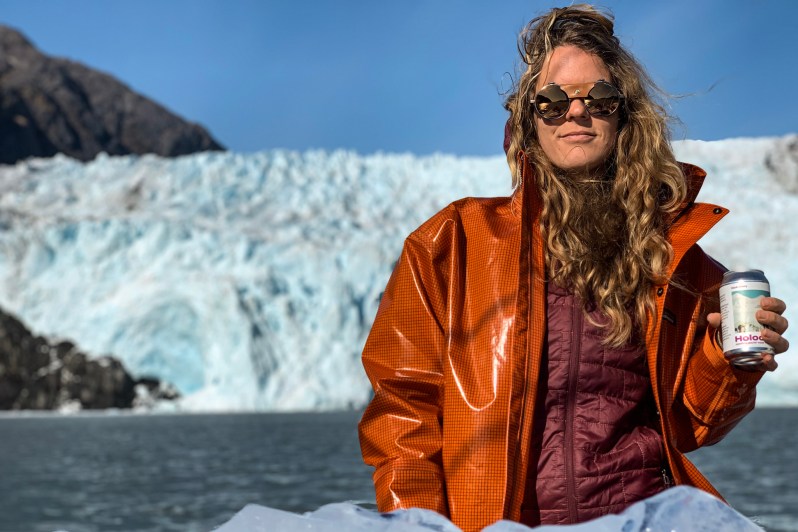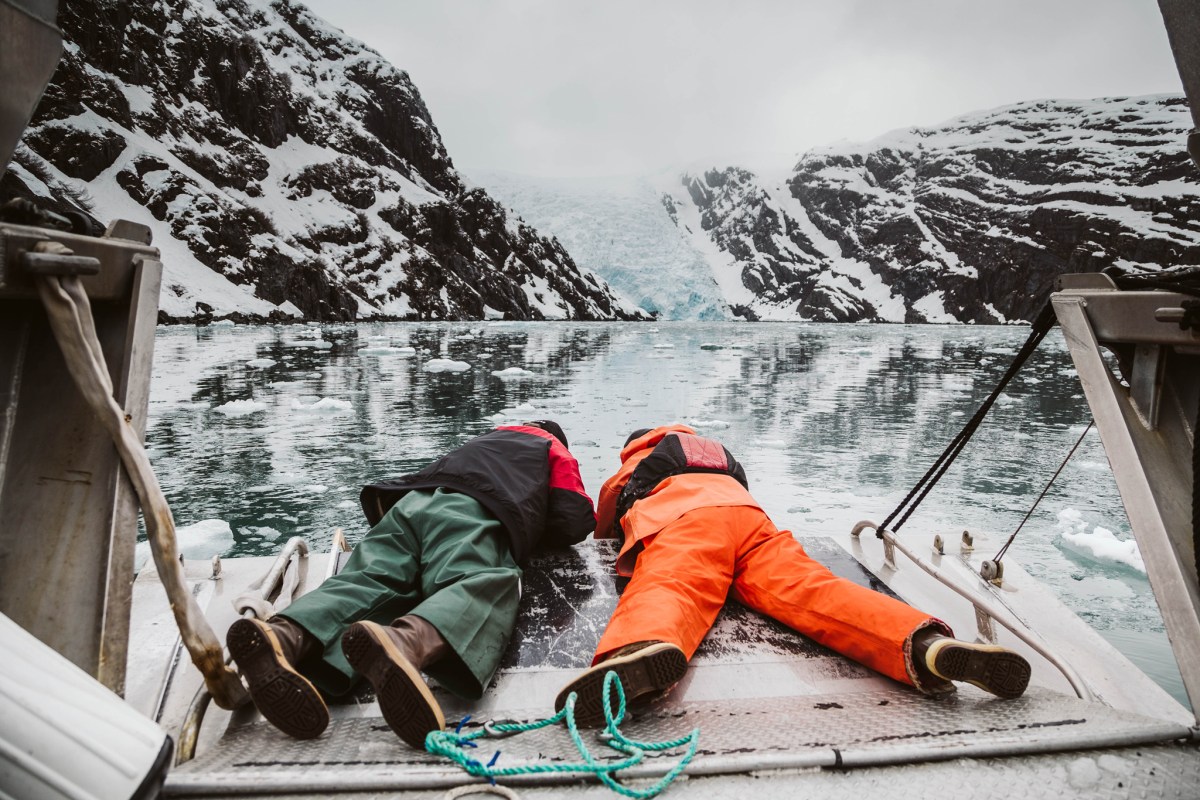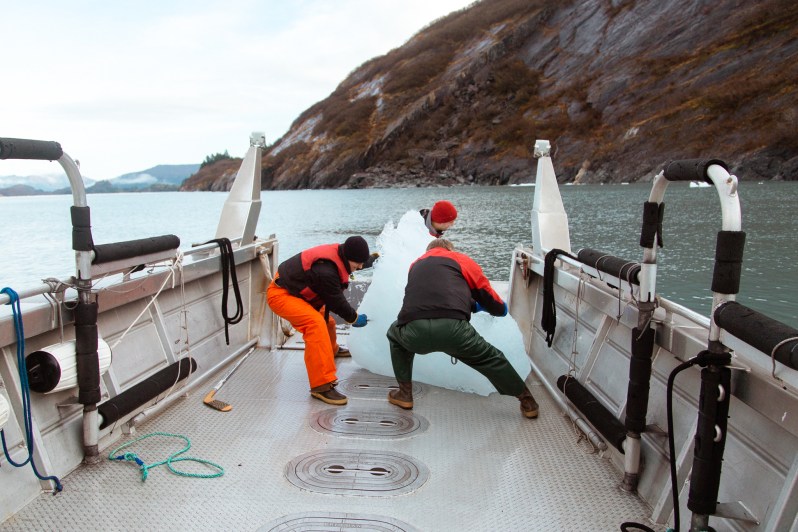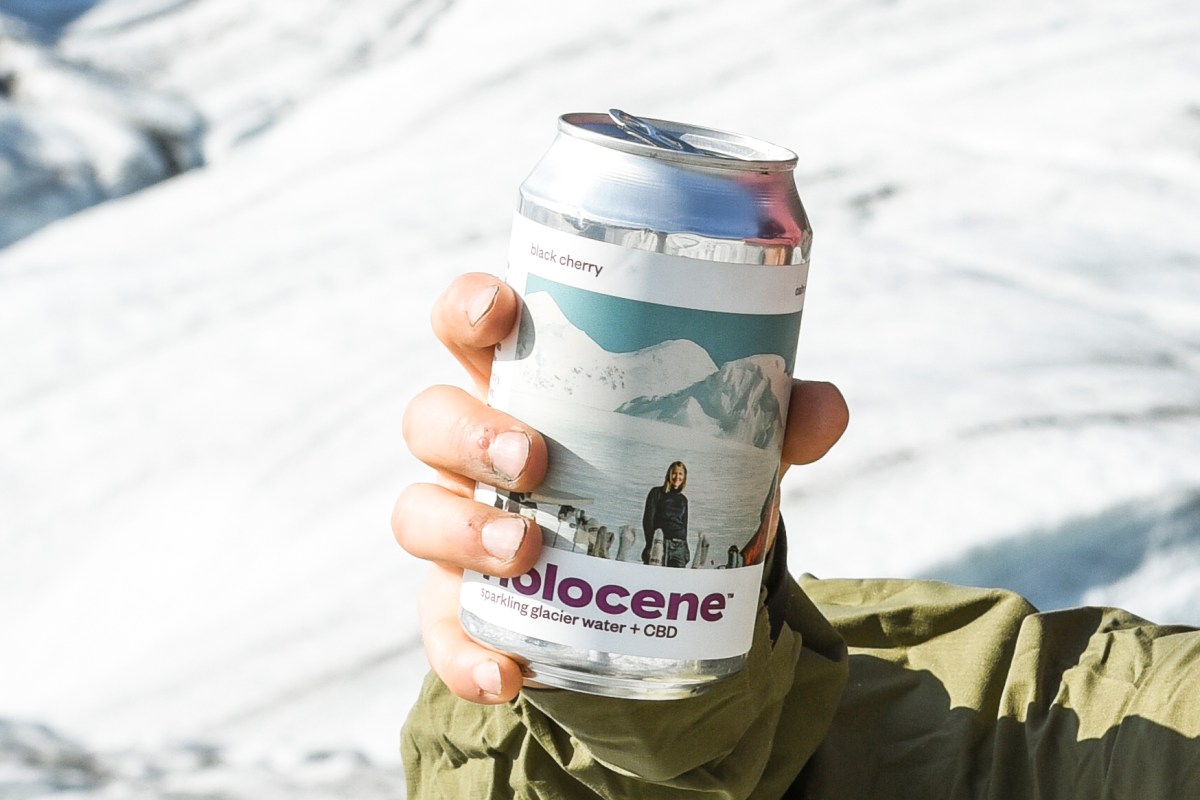
Joe McAneney wants you to save glaciers by drinking them.
Not in the way you might think, though. Instead, by kicking back with a trendy, canned beverage that just happens to be made with the purest water on Earth, released prematurely from ancient glaciers for your drinking pleasure due to climate change’s death grip on these moving rivers of ice.
That’s the idea behind Holocene, a new, CBD-infused sparkling water made from glacial icebergs fished from Alaska’s Prince William Sound. Launched in May 2019, Holocene is produced by McAneney’s company The High Expedition, a Talkeetna, Alaska-based dispensary.
“We want to be advocates to save and protect Alaska’s glaciers,” says McAneney. “We want to educate people, make them think.”
Living with Alaska’s legendary rugged wilderness practically in his backyard, McAneney sees first-hand how many of Alaska’s estimated 100,000 glaciers are melting or retreating at unprecedented rates. So he wanted to create a truly Alaskan product; something that embodied the spirit of adventure the state is known for, but that also highlighted its spectacular landscapes and increasing fragility in the face of climate change. The result: Holocene, named after the current geological epoch which began 11,700 years ago at the end of the last ice age.

“The name is definitely part of the message, it gives it more meaning,” McAneney explains. The message is clear: You’re drinking the last ice age. This water is hundreds or even thousands of years old.
But to produce Alaska’s first certified glacial ice product, you first need to get the glacial ice. For that, McAneney teamed up with the only man for the job: Scott Lindquist.
A true Alaskan “sourdough” (local slang for a hardy, long-time resident), Lindquist has been harvesting glacial ‘bergs from Alaskan waters since 1992. Originally a herring fisherman before the Exxon Valdez oil spill, he now holds the longest-leased and only active permit to harvest tidewater glacial icebergs in the state. In addition to using his ice to make local artisan spirits (and now Holocene), Lindquist also sells it as high-end cocktail ice for bars around the world. And he does it all while technically being legally blind from optic atrophy.
Collecting the glacial icebergs used to make Holocene is an adventure in and of itself. It’s a three-hour drive from Talkeetna to Whittier, a popular tourist port in Prince William Sound from which Lindquist’s company, Alaska Glacial Ice, departs. For Holocene, Lindquist primarily sources his bergs from the active tidewater Blackstone and Beloit Glaciers, maneuvering the boat as close as safely possible to the front wall of the glaciers to find the freshest, most recently calved bergs. Once a desirable iceberg is identified (often with the aid of a hockey stick used to roll the berg over and examine it), Lindquist and his team attach ice screws and hand-winch it aboard. The icebergs can weigh anywhere from hundreds to thousands of pounds.

The icebergs are then ferried back to Talkeetna, where, in partnership with Denali Brewing Company, they’re melted, filtered, carbonated, and canned in cans that feature vintage photos of mountaineers on Denali. The contents of each can are infused with 10mg of nano-CBD (derived from organic hemp) and flavored with natural raspberry and lime or black cherry; just a hint of flavor so that it doesn’t overpower the taste of the “last perfect piece of water that the planet has,” as Lindquist puts it.
“We don’t want to taint the glacier water,” McAneney agrees, saying that an unflavored version will be available soon as well. (And funnily enough, glacial water may be the perfect fit for sparkling water, as, when glacial ice is thawed, the release of trapped, compressed air is called “bergy seltzer.”)
But Holocene’s main mission is first and foremost about raising awareness about the plight of Alaska’s glaciers. The cans themselves feature information, and Holocene’s social media pages are full of videos, images, and other content showing how the icebergs are harvested and making the issue as “in your face” as possible (a full-length documentary is even in the works).
But Holocene is not without its critics. Harvesting ice from endangered glaciers is a controversial idea, and in promoting Holocene (with their tagline “Hand-harvested icebergs from Alaska, U.S.A.”) McAneney has had to spar with more than a few detractors.

“It can get people riled up,” McAneney says. “It’s a very provocative product.”
But that’s part of the goal: It grabs people’s attention and “starts a conversation,” allowing McAneney to engage with people and begin a dialogue about the product and climate change. McAneney says that usually when people are open to talking with him, in the end, they understand what he’s trying to do.“Some people you’ll never change their minds. But if we can change a few …”
There may even be an upside to harvesting the icebergs. With glaciers calving more frequently, more and more freshwater is released at unnatural rates, disrupting the chemical balance of the saltwater bays and affecting local flora and fauna. Removing the bergs can prevent too much melting too quickly. While only removing a handful of icebergs at a time seems like a drop in the bucket, no active harm is being done to the glacier or surrounding environment, and maybe it even does some good.
McAneney also says that his group might start partnering with scientists and glaciologists to share data and observations to help them to track changes. “Scott’s been doing this for 25 years, he’s seen how they [the glaciers] are changing.”

And above all, it’s about scale: McAneney doesn’t want the operation to get so big it ceases to be sustainable or becomes a detriment to the mission.
“It will never be mass-produced,” McAneney says. “The icebergs, they’re a limited resource, they’re going away, and that’s a big part of our message.”
Indeed, some of their marketing materials come with this slogan: “Available while glaciers last.”
You can purchase 12-packs from The High Expedition in Talkeetna or other dispensaries around Alaska or you can order them online at drinkholocene.com.



